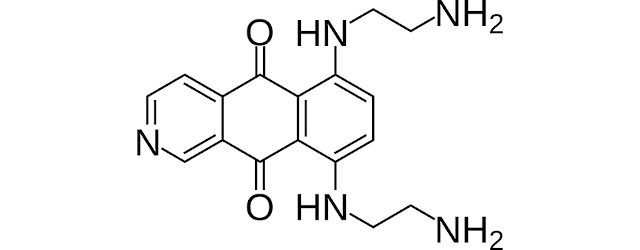Advanced cancer drug shrinks and intercalates DNA (Vol. 51, No. 1)

Experiments and statistical models reveal that the recently developed cancer drug Pixantrone forces itself inside the double helix structure of DNA molecules, then shrinks their backbones.
Because of the harmful side-effects of chemotherapy, and the increasing resistance to drugs found in many cancer cells, it is critical for researchers to continually search for new ways to update current cancer treatments. Recently, a drug named Pixantrone (PIX) was developed, which is far less damaging to the heart than previous, less advanced compounds. PIX is now used to treat cancers including non-Hodgkin’s lymphoma and leukaemia, but a detailed knowledge of the molecular processes it uses to destroy cancer cells has been lacking so far. In a new study published in EPJ E, Marcio Rocha and colleagues at the Federal University of Viçosa in Brazil uncovered the molecular mechanisms involved in PIX’s interactions with cancer DNA in precise detail. They found that the drug first forces itself between the strands of the DNA molecule’s double helix, prising them apart; then compacts the structures by partially neutralising their phosphate backbones.
C.H.M. Lima, J.M. Caquito jr, R.M. de Oliveira, M.S. Rocha, Pixantrone anticancer drug as a DNA ligand: Depicting the mechanism of action at single molecule level, Eur. Phys. J. E 42, 130 (2019)
[Abstract]





